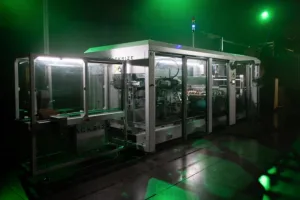Warehouse shortage on the horizon
Data suggests that by the end of 2025 there may be less than a years’ worth of modern warehouse supply.

By Liza Helps Property Editor Logistics Matters
ACCORDING TO latest research from real estate analyst CoStar Group, industrial and logistics construction starts fell to a 10-year low in 2024, dropping to less than 30 million ft2, 60% below peak levels of 2022 and 2021, and a similar level to 2014.
While build costs have stabilised, higher interest rates, moderating leasing activity and lengthening void periods have deterred some developers.
But stronger tenant demand is expected in the year ahead as the UK’s brighter economic prospects and retail sales growth translate into demand for new facilities.
While net absorption was strongly negative across the industrial sector in 2024, it was positive by around 24 million square feet in warehouses built in the past five years. Occupancy losses meanwhile accelerated in older, less energy-efficient buildings.
The shift to more modern warehouses will likely continue. CoStar’s baseline forecast scenario projects net absorption in newer facilities to exceed completions by around 10 million ft2 in the year ahead, resulting in a six percentage-point drop in vacancy among these newer buildings in 2025.
Even accounting for projected new completions, such a scenario would leave less than 35 million ft2 of modern warehouse space unoccupied by the end of this year, equivalent to about 1.4 years’ worth of supply based on the absorption of new space last year or 0.9 years when viewed against the three-year average.
Despite last year’s backdrop of softer demand and elevated supply, average new-build rents still rose by 5%, roughly double the rate of inflation.
Given the expected tightening of market conditions in the year ahead, rental growth among modern industrial properties has the potential to surprise on the upside.






